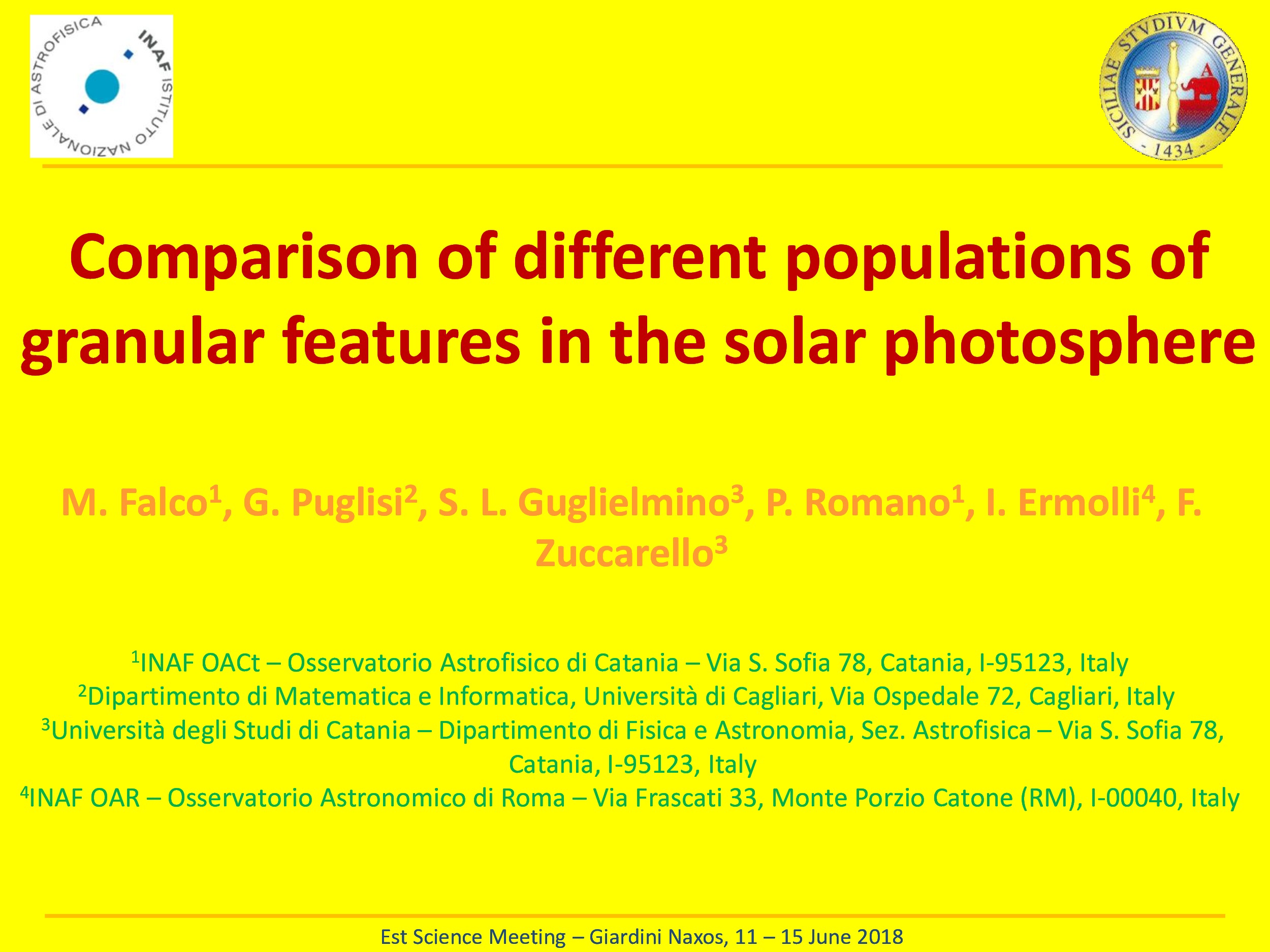Comparison of different populations of granular features in the solar photosphere
Main category
Natural Sciences (Astrophysics and Astrononmy)
Abstract
One of the most visible manifestations of convective motions occurring in
the uppermost layers of the solar convection zone is the granulation. Strong
magnetic fields hinder the convective motions, but the appearance of bright
structures such as umbral dots (UDs) and light bridges (LBs) in sunspots also
shows that in strong magnetic field regions, the convection is not completely
suppressed. To improve the current knowledge of the mechanism behind
the appearance of the different bright structures in sunspots, we investigate
the properties of the granules identified by a new segmentation algorithm in
regions characterized by different magnetic field strength.
We analyzed data relevant to a large sunspot with a LB observed in AR
NOAA 11263. The data were acquired by the CRisp Imaging SpectroPo-
larimeter at the SST on 6 August 2011. We applied a new segmentation
algorithm to the data acquired along the Fe I 630.15 nm line.
We found that the granules in the LB have a diameter between 0
.
22
′′
and 0
.
99
′′
, being smaller than the granules in a nearby plage region (PL)
and similar to those of the UDs. The values of the mean continuum inten-
sity, between 0.42 Ic and 0.98 Ic for the LB granules, are similar to those
of the UDs. PL granules have higher values of continuum intensity, proba-
bly reflecting different conditions of the plasma convection. Mean Doppler
velocity and mean magnetic field strength have similar values between LB
granules and UDs as well.
Different values for the physical properties analyzed have been found
between the granules of the PL and LB granules of the three analyzed so-
lar regions, suggesting that PL and sunspot granules have different physical
properties. This clearly depends on the different physical conditions of the
regions where these two types of granular structures are embedded and con-
firms the recent findings on the similarity between granules in PL and quiet
Sun regions. Finally, a noteworthy result is that the granules observed in
the faint LB have physical properties similar to those found for UDs.
Do you have problems viewing the pdf-file? Download poster
here
If the poster contains inappropriate content, please
report the poster. You will be redirected to the landing page.
